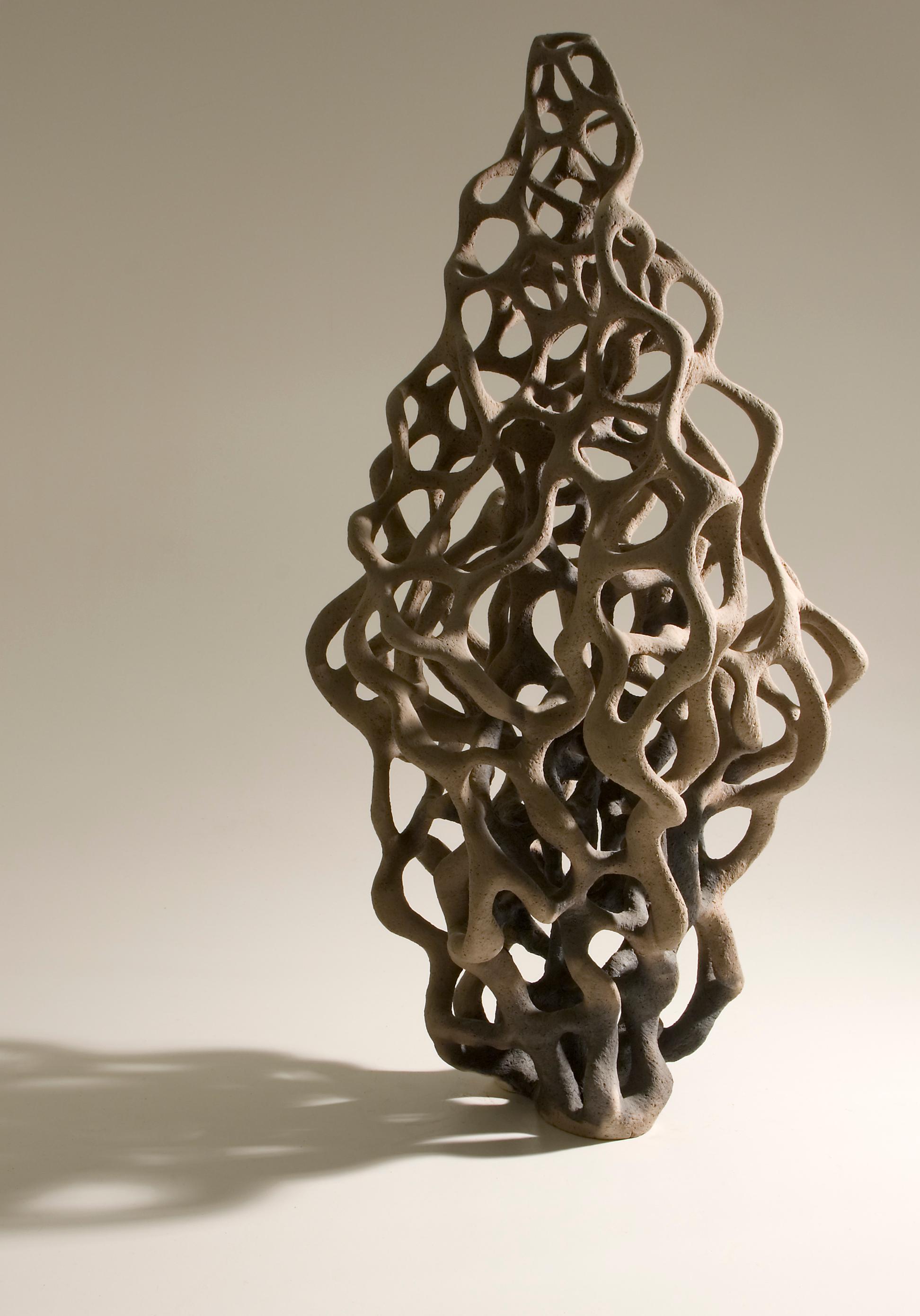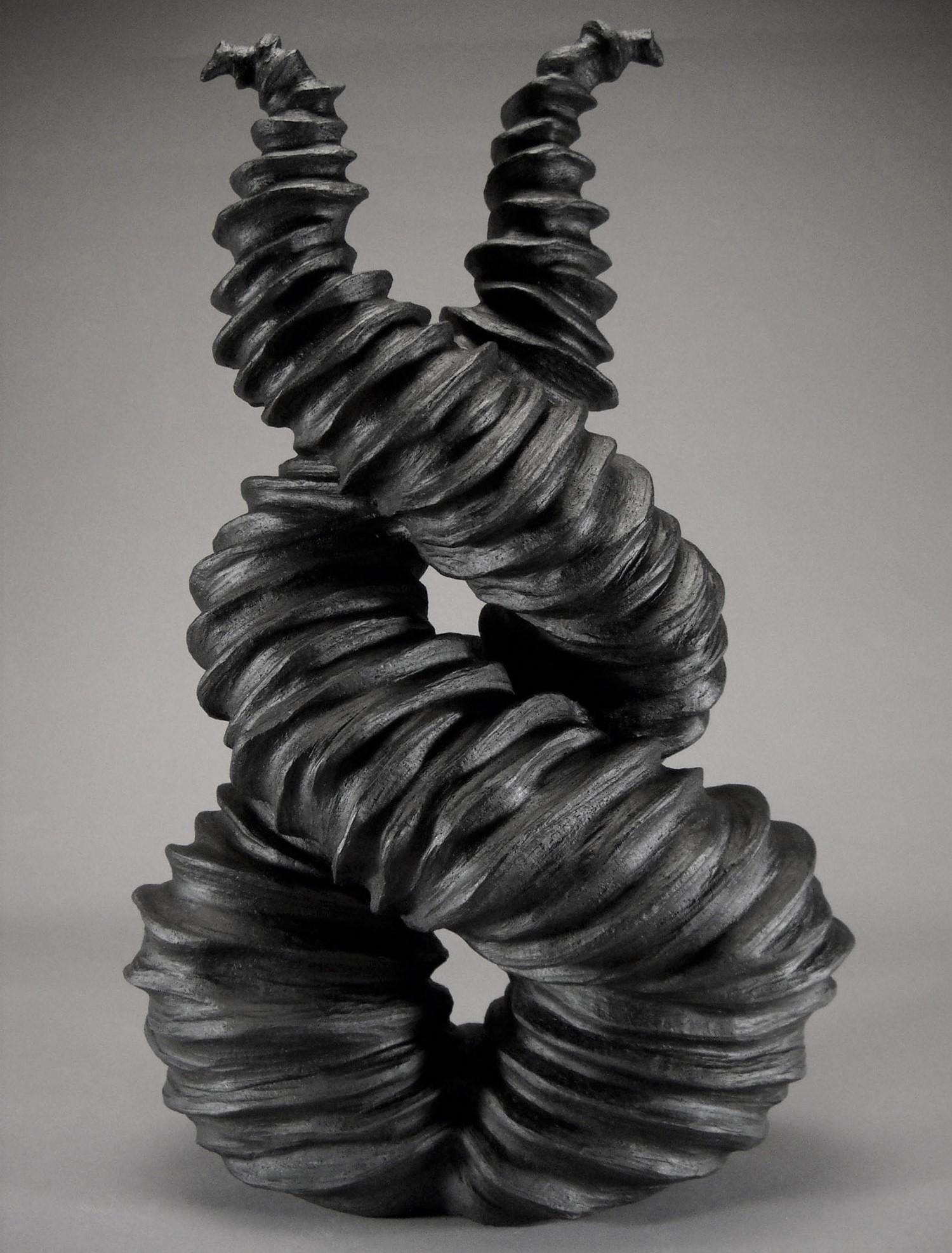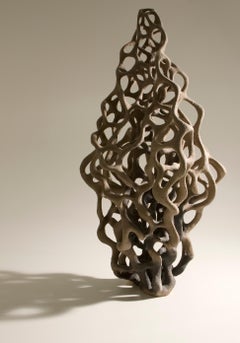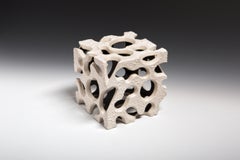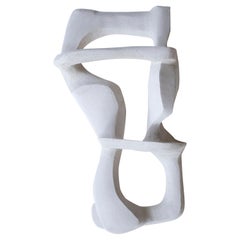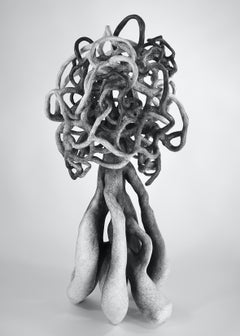Items Similar to Infinity loops. Stone mass h 18, 5 cm
Want more images or videos?
Request additional images or videos from the seller
1 of 6
Elina Titane Infinity loops. Stone mass h 18, 5 cm
$1,083.77
£801.85
€900
CA$1,498.50
A$1,645.17
CHF 858.29
MX$19,908.82
NOK 10,757.30
SEK 10,136.21
DKK 6,852.63
About the Item
Infinity loops. Stone mass h 18,5 cm
Small gray color abstract sculpture "Infinity loops" from stone mass
Elina Titane represents the younger generation of modern ceramic art in Latvia. Emotional and sensually high-strung ceramic artworks by Elina Titane always kindle imagination of the viewer and create an idle flow of associations. She lets us have a look in her inner world of anxieties and emotions, seeking for answers in harmonic silence. Throughout her artworks, she seemingly poses a definite question to the viewer: Is it possible to compare creative work with phenomena, which are existent in nature? Creativeness to her is a source of nature, inherent in each of us, it is like rain, which awakens the inner potential of ideas, makes ideas come to life, grow, transform and materialize in art objects. The indirect, associative, fragmentary way she applies in conveying the artistic idea is a consistent and convincing instrument of her artistic expression. For her it is a certain way to avoid analytical thinking and develop a more profound insight. She releases the flow of free associations, where countless parallels and dimensions merge, and there are no definitely set borderlines between Time and Space, Beginning and End. What is going on under one sphere keeps going on also under millions of others. Everything is bound together in Infinity. Nature processes are working analogous to thinking. Education 2006-2008 Latvian Academy of Art, Ceramics Department, Masters 2002-2006 Latvian Academy of Art, Ceramics Department, Bachelor's Degree
1998-2002 Riga School of Art and Design, Ceramics Department
1996-1998 Ziemeļrīgas Arts and Crafts School, Ceramics Department Experience 2014 09-11 Art residence in Lovisa Artists studio, Lovisa, Finland 2014 08 Workshop in the “Lode” brick factory, Liepa, Latvia
2014 02 14 International Ceramic Symposium. Egypt, Dahab
2013 09 3 International Ceramics Symposium, Tunisia, Tunis
2013 08 International Symposium "АРТ ЖЫЖаЛЬ", Belarus
2012 10 International symposium “Navigating 4” Ventspils, Latvija
2012 08 48th International Ceramics and Sculpture Symposium, Bolieslawiec, Poland
2011 07 International Symposium "АРТ ЖЫЖаЛЬ", Belarus
2010 10 International Ceramic Symposium "Navigating 2" Ventspils, Latvia
2009 07 International Symposium "АРТ ЖЫЖаЛЬ", Belarus
2008 10 Meissen porcelain factory visit the project "300 Jahre Meissen", Meissen, Germany
2008 08 Participation in the sculptures fire "Ferryman" shaping and firing. Salacgriva, Latvia
2008 07 Ceramic and Textile Symposium "Fire Disasters 10th dimension " Ogre, Latvia
2006 08 10-day workshop "European ceramic context 2006", island of Bornholm, Denmark
2005 08 Symposium "Together" Zvartava Castle, Latvia
2004 04 2-week educational trip to the "Instituto d'Arte di Porta Romana", Florence, Italy
2003 08 International Student Symposium "Together" Zvartava Castle, Latvia
Latvian Artists' Union member since 2007. Year Personal exhibition 2015 03-06 “Flowering”, Jocker club, Riga, Latvia 2015 01-03 “White Footprints”, Riga Porcelain Museum, Riga, Latvia 2014 12- 2015 03 “Celebration Time”, Jocker club, Riga, Latvia 2014 11 “In the way” s/c Oga, Preili, Latvia 2012 03 “Steps”, Centre mc2 decorum hall, Riga, Latvia 2011 12 “Steps”, Jelgava School of Art, Jelagva, Latvia 2011 05 “Infinite loop”, gallery, “Antonia”, Riga, Latvia 2009 10 “After the Rain”, gallery, “Apsida”, Riga, Latvia
About the Seller
5.0
Gold Seller
Premium sellers maintaining a 4.3+ rating and 24-hour response times
Established in 2002
1stDibs seller since 2020
198 sales on 1stDibs
Typical response time: 13 hours
- ShippingRetrieving quote...Shipping from: Riga, Latvia
- Return Policy
Authenticity Guarantee
In the unlikely event there’s an issue with an item’s authenticity, contact us within 1 year for a full refund. DetailsMoney-Back Guarantee
If your item is not as described, is damaged in transit, or does not arrive, contact us within 7 days for a full refund. Details24-Hour Cancellation
You have a 24-hour grace period in which to reconsider your purchase, with no questions asked.Vetted Professional Sellers
Our world-class sellers must adhere to strict standards for service and quality, maintaining the integrity of our listings.Price-Match Guarantee
If you find that a seller listed the same item for a lower price elsewhere, we’ll match it.Trusted Global Delivery
Our best-in-class carrier network provides specialized shipping options worldwide, including custom delivery.More From This Seller
View AllInfinity loops. Stone mass h 21 cm; w 11 cm; d 11 cm
Located in Riga, LV
Infinity loops Stone mass h 21 cm; w 11 cm; d 11 cm
Small gray color abstract sculpture "Infinity loops" from stone mass
Category
2010s Abstract Abstract Sculptures
Materials
Stone
$770 Sale Price
20% Off
Infinity loops. Ceramics and porcelain, h 35 cm; W 27 cm; D 25 cm
Located in Riga, LV
Infinity loops. Ceramics and porcelain, h 35 cm; W 27 cm; D 24 cm
White abstract sculpture from porcelain and ceramics
Category
2010s Abstract Abstract Sculptures
Materials
Ceramic, Porcelain
$2,312 Sale Price
20% Off
Unity in Diversity. 2008, stone wear, 90х35x42 cm
Located in Riga, LV
Unity in Diversity
2008, stone wear, 90х35x42 cm
Gray abstract sculpture from stone
Category
Early 2000s Abstract Abstract Sculptures
Materials
Stone
$4,046 Sale Price
20% Off
Arise. Stone mass, porcelain, h 61 cm
Located in Riga, LV
Arise. Stone mass, porcelain, h 61 cm
White abstract sculpture from stone mass
Category
2010s Abstract Abstract Sculptures
Materials
Stone
$3,082 Sale Price
20% Off
Arise. Stone mass, porcelain, h 57 cm; W 21 cm; D 25 cm
Located in Riga, LV
Arise. Stone mass, porcelain, h 57 cm; W 21 cm; D 25 cm
White abstract sculpture from stone mass
Category
2010s Abstract Abstract Sculptures
Materials
Stone
$3,082 Sale Price
20% Off
After the rain. 2009, stone wear, 50x31x26 cm
Located in Riga, LV
After the rain.
2009, stone wear, 50x31x26 cm
Gray abstract sculpture from stone
Category
Early 2000s Abstract Abstract Sculptures
Materials
Stone
$1,926 Sale Price
20% Off
You May Also Like
Intertwined, Abstract Ceramic Sculpture, 2018
Located in Boston, MA
Artist Commentary:
All of my ceramic work is hand-built and one of a kind. They are labor intensive and well crafted.
Keywords: Contemporary
Artist Biography:
Judith grew up 15 mi...
Category
21st Century and Contemporary Naturalistic Abstract Sculptures
Materials
Ceramic, Glaze
Space and Time I : small interior sculpture out of clay
Located in New York, NY
Katie Yang's abstract ceramic sculptures delve into the unknowable nature of our world, exploring the interplay between control and chance. Influenced by artistic traditions from bot...
Category
2010s Abstract Abstract Sculptures
Materials
Porcelain
Sculpture Form No_005 by AOAO
Located in Geneve, CH
Sculpture form No_005 by AOAO
Dimensions: W 27 x D 12 x H 48 cm
Materials: Ceramic bisque
Color options available upon request.
The idea was born after deciding to reconnect with my...
Category
2010s Dutch Modern Abstract Sculptures
Materials
Ceramic
$1,457 / item
Abstract Minimal Clay Sculpture: 'Escalate'
By Judi Tavill
Located in New York, NY
Judi Tavill( NJ) creates biomorphic abstraction coupling sculpture with drawing that references the complicated experience of connection and entanglement.
...
Category
2010s Contemporary Abstract Sculptures
Materials
Clay, Paint, Varnish, Graphite
Spatial Spiral: Crawl - Abstract spiral ceramic sculpture
By Michael Boroniec
Located in East Quogue, NY
Spatial Spiral Crawl ceramic sculpture by Michael Boroniec - ceramic, glaze
Michael Boroniec’s “Spatial Spiral” series is an adventure in three dimensions and expands the concept of...
Category
2010s Contemporary Abstract Sculptures
Materials
Ceramic, Glaze
"INNER VIEW VII" Organic, Abstract Marble Sculpture by Caroline Ramersdorfer
By Caroline Ramersdorfer
Located in New York, NY
"INNER VIEW VII" by Caroline Ramersdorfer
Seven layered, marble slabs on a steel pedestal
(each slab measures 12" x 12" x .75")
Ramersdorfer carves slabs of marble to reveal complex...
Category
21st Century and Contemporary Abstract Abstract Sculptures
Materials
Stone, Marble, Steel
